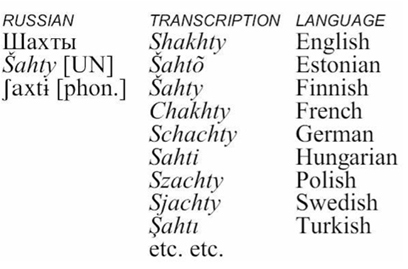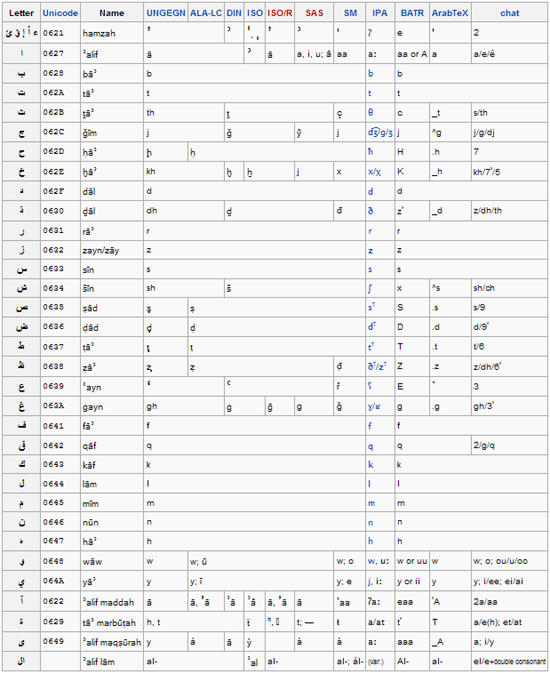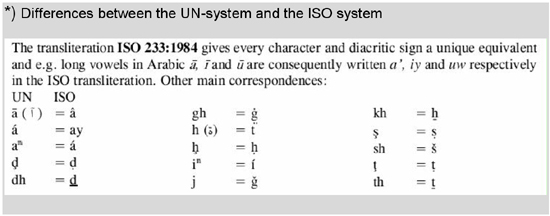|
Introduction |
||
|
What happens with language-oriented conversions? Although the name contains
only five sounds, they have in this table 17 different graphic
representations in Roman letters. The phoneme [ What happens with method-oriented conversions? Apart from country-oriented conversion
methods, there are also different conversion methods that don't
target specific countries, but are based on specific scientific
viewpoints or institutional traditions.
The existence of different methodological systems also would result in different name versions in the Roman alphabet for the same Arab name: What happens with method-oriented conversions?* - continued) So, even if these systems are not language-oriented, there still are sizable differences. |
||
|
Home | Self study : Conversion systems | Contents | Intro | 1.Solution | 2.Terminolgy (a/b/c/d) | 3.UN approved systems | 4.Typology of conversion types |



